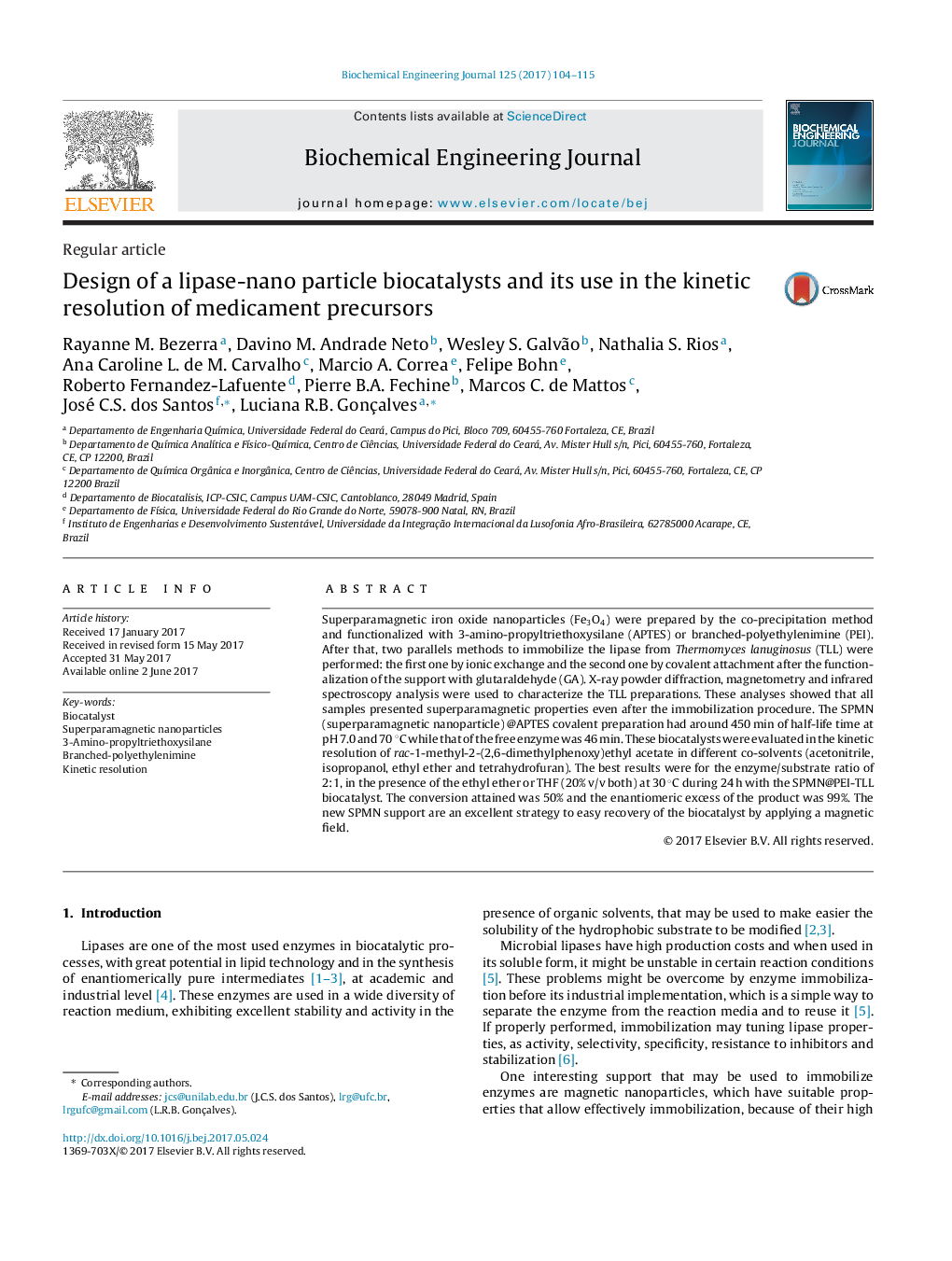| Article ID | Journal | Published Year | Pages | File Type |
|---|---|---|---|---|
| 4752129 | Biochemical Engineering Journal | 2017 | 12 Pages |
â¢TLL immobilized on superparamagnetic nanoparticles (Fe3O4) functionalized with PEI.â¢TLL immobilized on superparamagnetic nanoparticles functionalized with APTES.â¢New strategy to obtain of medicament precursors with biocatalyst from SPMN supports.â¢Efficiency in kinetic resolution of medicament precursor, 50% (conversion).â¢Efficiency in kinetic resolution of medicament precursor, e.e. = 99%.
Superparamagnetic iron oxide nanoparticles (Fe3O4) were prepared by the co-precipitation method and functionalized with 3-amino-propyltriethoxysilane (APTES) or branched-polyethylenimine (PEI). After that, two parallels methods to immobilize the lipase from Thermomyces lanuginosus (TLL) were performed: the first one by ionic exchange and the second one by covalent attachment after the functionalization of the support with glutaraldehyde (GA). X-ray powder diffraction, magnetometry and infrared spectroscopy analysis were used to characterize the TLL preparations. These analyses showed that all samples presented superparamagnetic properties even after the immobilization procedure. The SPMN (superparamagnetic nanoparticle) @APTES covalent preparation had around 450 min of half-life time at pH 7.0 and 70 °C while that of the free enzyme was 46 min. These biocatalysts were evaluated in the kinetic resolution of rac-1-methyl-2-(2,6-dimethylphenoxy)ethyl acetate in different co-solvents (acetonitrile, isopropanol, ethyl ether and tetrahydrofuran). The best results were for the enzyme/substrate ratio of 2:1, in the presence of the ethyl ether or THF (20% v/v both) at 30 °C during 24 h with the SPMN@PEI-TLL biocatalyst. The conversion attained was 50% and the enantiomeric excess of the product was 99%. The new SPMN support are an excellent strategy to easy recovery of the biocatalyst by applying a magnetic field.
Graphical abstractDownload high-res image (130KB)Download full-size image
